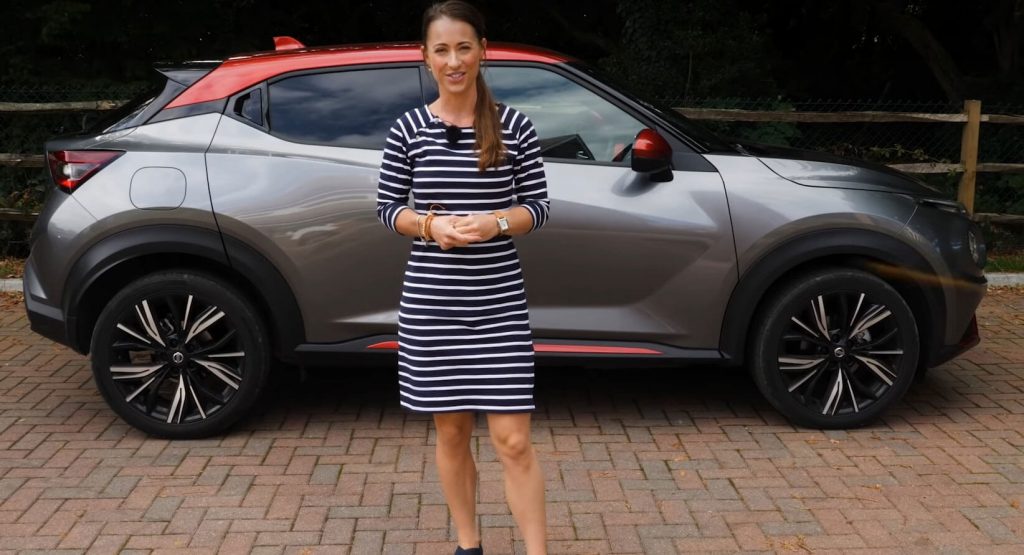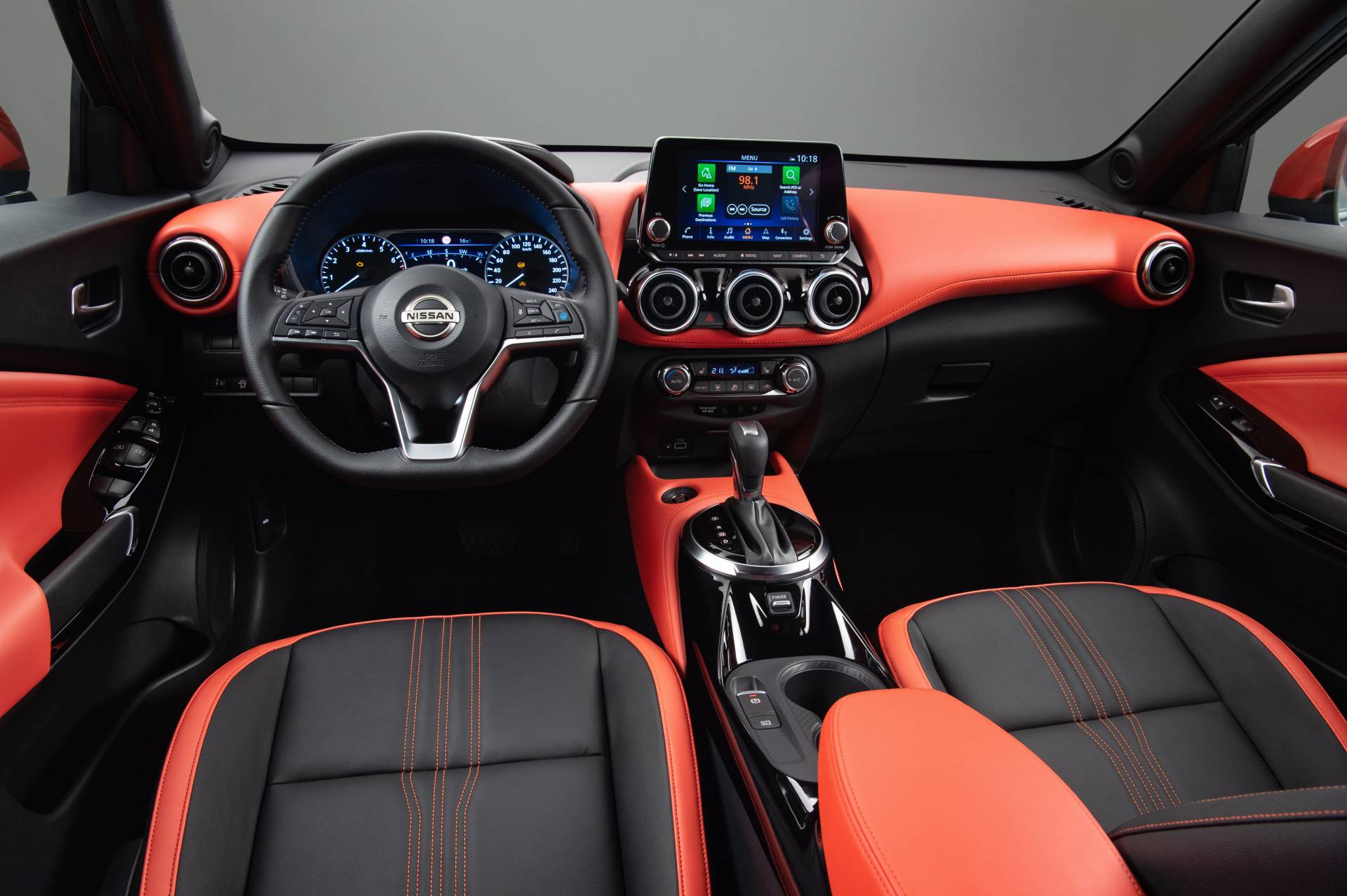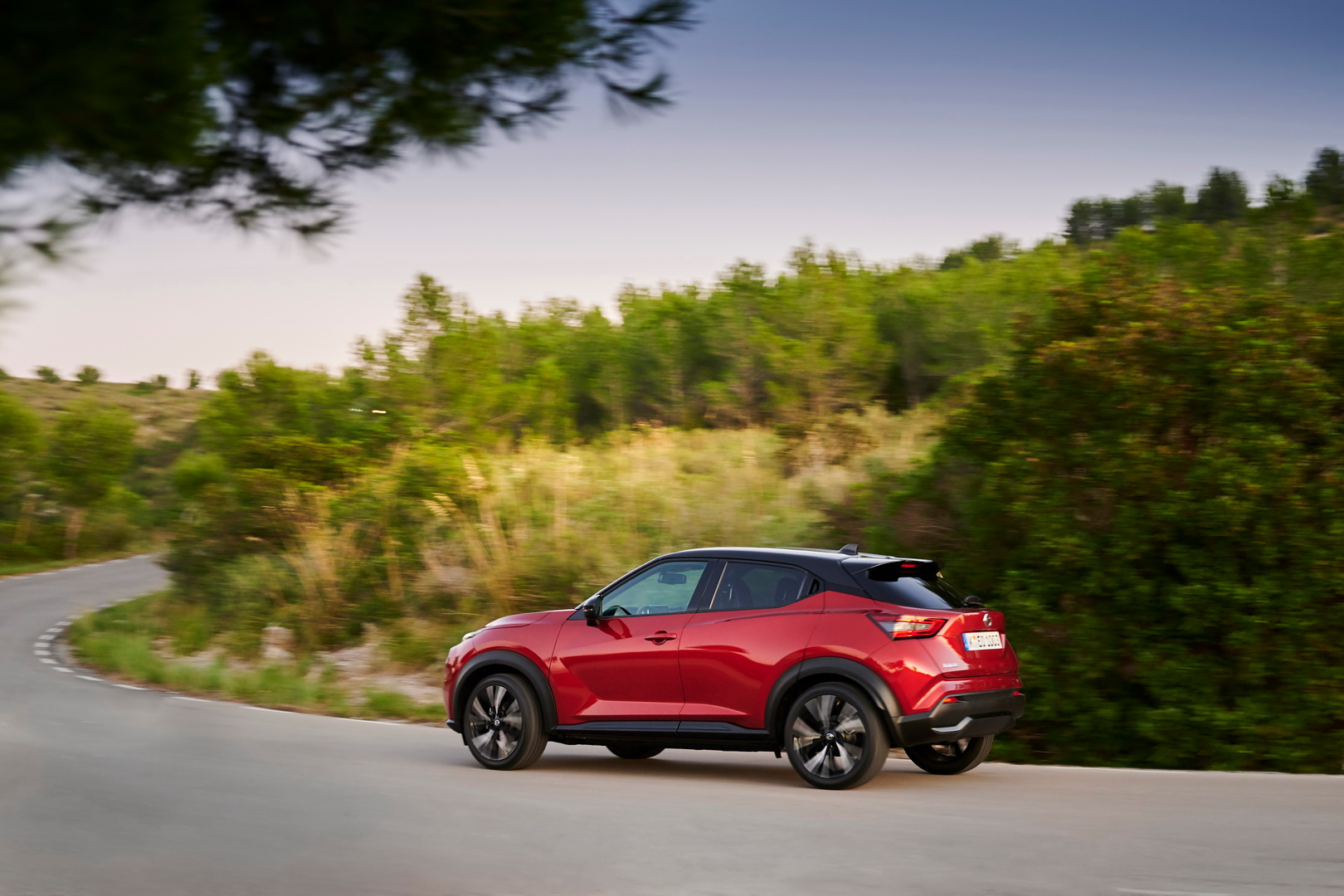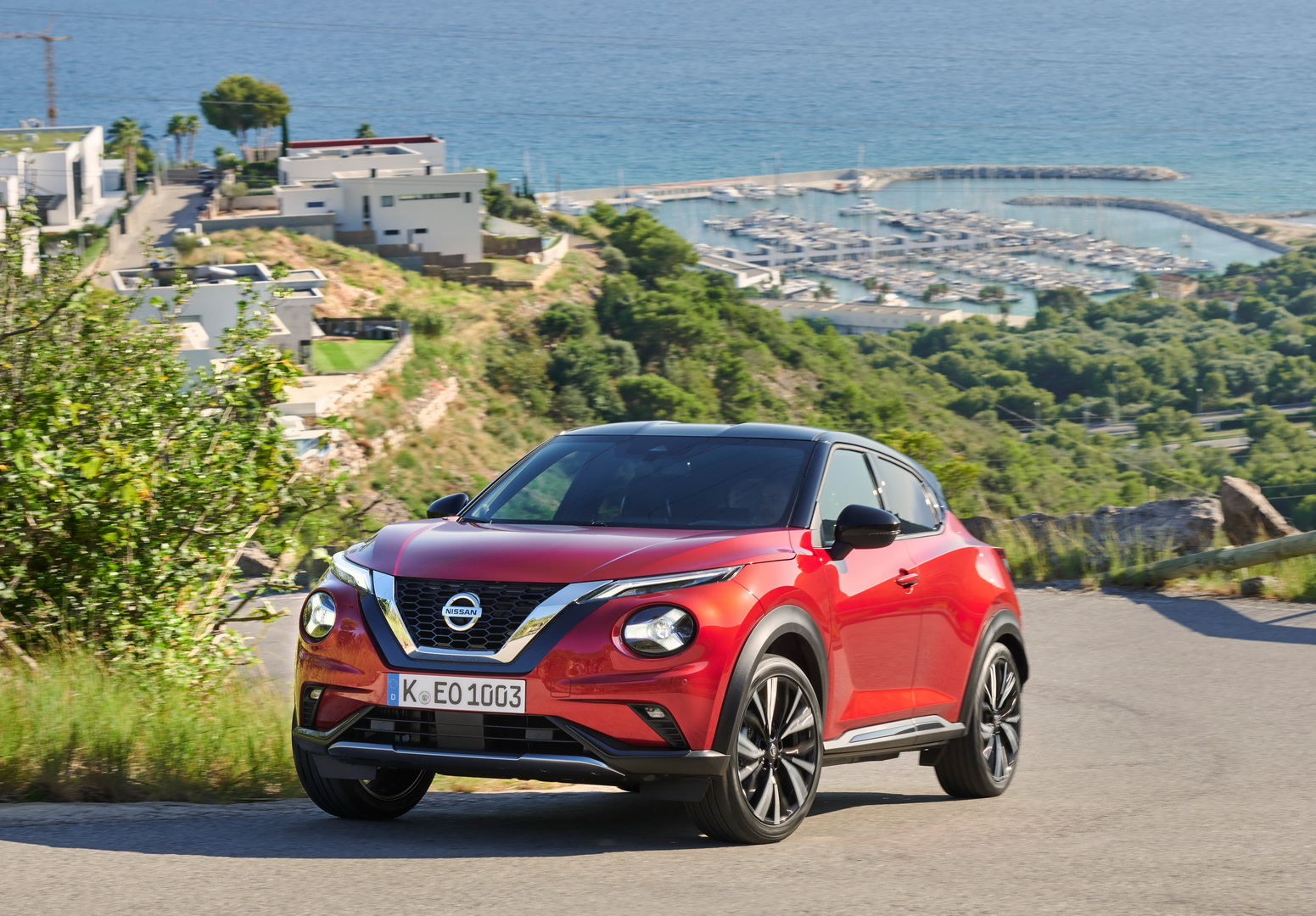Nissan has basically reinvented the small crossover segment back in 2010 with the original Juke, which accounted for around 1.5 million sales worldwide. Now, the second-gen is more mature, though it hasn’t lost the quirky looks.
The V-shaped grille is still present, but it is much bigger. It also has split-level headlights, large shoulders and an arched roofline behind the B pillars that ends with a spoiler. Horizontal taillights have replaced the old L-shaped units and the whole back end appears more muscular.
Launched one year ago, it is built on the CMF-B platform shared with the latest Renault Captur and boasts a bigger footprint that translates into more generous legroom for people sitting on the rear bench. The outdated interior of the old car has nothing in common with the new one, and the overall build quality has increased slightly.
Watch Also: Can The New Nissan Juke Become Europe’s Best Small Crossover?
The agile and responsive handling earns it extra points, and so does the front visibility. The big rear pillars affect rear visibility, but this is something easily solved by the reversing camera or 360-degree system available in the upper specs.
Despite the sporty looks, the 2020 Juke is only available with a single engine: a 1.0-liter three-pot, rated at 115 HP (117 PS / 86 kW) and 148 lb-ft (200 Nm) of torque, which works in conjunction with either a six-speed manual or a seven-speed automatic transmission.
In the UK, where this review took place, pricing starts at under £18,000 (~$23,155) for the Visia grade. The Tekna+ press car, specced with a few options, is around £26,000 ($33,445).
Currently, there is no indication that the Juke will return to the U.S. market, where Nissan replaced it with the Kicks two years ago.











